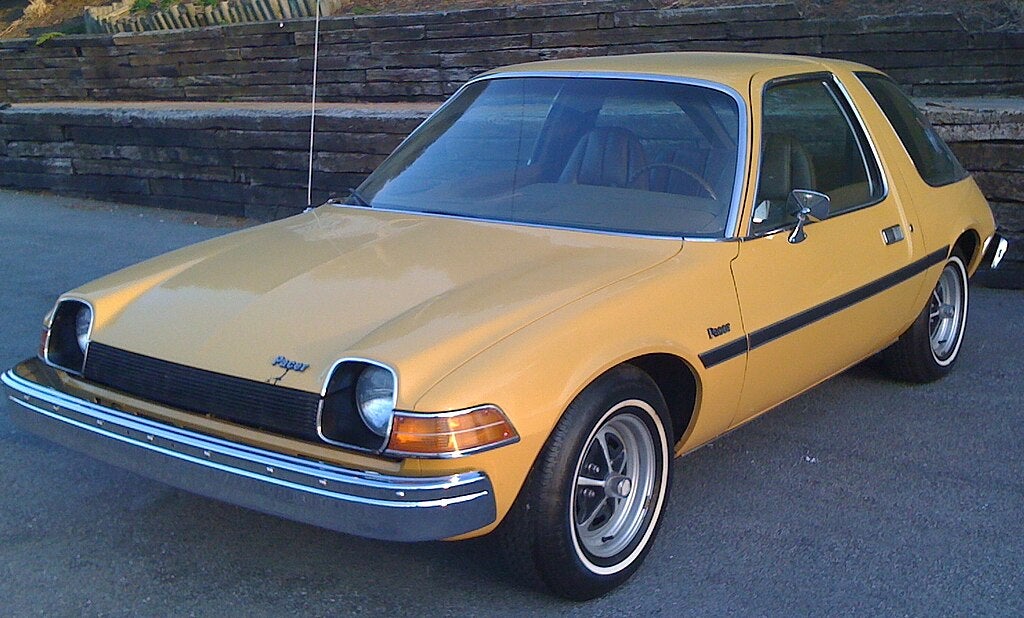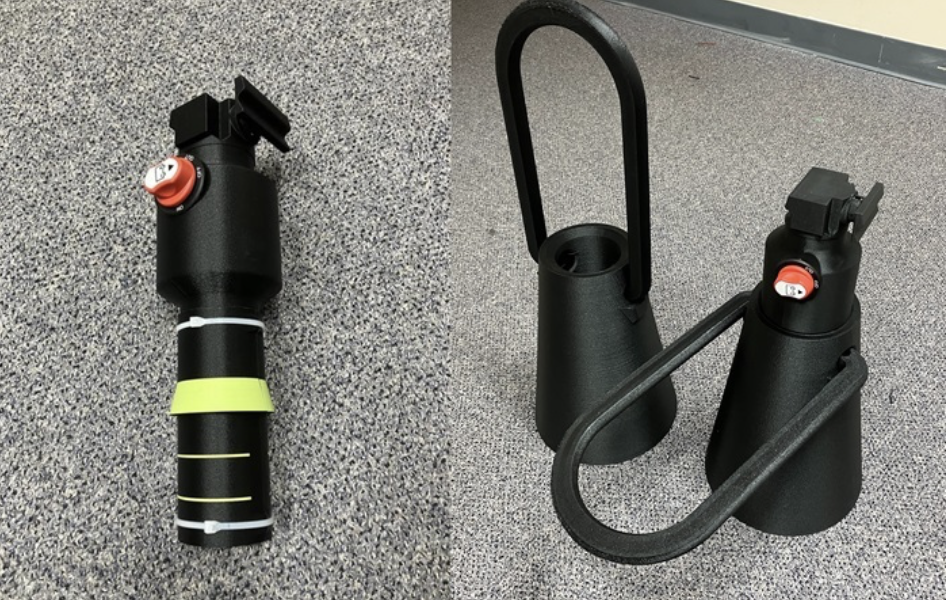The featured image is used by permission from the photographer Christopher Ziemnowicz.
Hey folks – my name might look unfamiliar. That’s because I’m subbing for Motorhead columnist Scott Hudson, who is continuing to battle health problems. Prayers for you, my man.
When asked to fill in for Scott, I was overjoyed – because I’ve been a car buff (not expert) for over 50 years, gobbling up magazines like Road & Track, Motor Trend, and Car & Driver, just to mention a few.
I started thinking about all the cars I’ve had and how their changes reflect how the world around us is changing. Auto designers are great at coming up with new ideas, which are often crushed at the next board meeting.
Auto engineers have a lot of talent to turn the accepted ideas into workable machinery, except when the bean counters step in. To be fair to the bean counters, a machine that costs too much will not sell. On the other hand, a machine that doesn’t run well can destroy reputations and market share. Those of you old enough to remember the Chevy Vega know what I’m talking about.
Believe it or, none of the dozen cars I’ve had were anywhere near that bad. My first was an American Motors Pacer, described as a bubble car or pregnant roller skate, but this car – a gift from Dad – would contain everything I owned and still ride comfortably. Actually, it showed what American engineers can do. The car was designed to have a Wankel (rotary) engine that GM was buying that AMC would then get as part of the deal. GM at the last moment decided not to finish buying the rights to that motor, leaving AMC with a car with no motor. Somehow, they made their ancient and indestructible inline-six engine fit – and work!
But we all like new stuff, as soon as I finished school I bought a Fiat sedan – a gorgeous car that would out handle almost everything. It looked funny sitting next to an Olds Cutlass my inlaws had lent us to tow a trailer out to Texas after Debbie and I got married.
A true Detroit product, that Cutlass weighed as much as a tank, drank about as much gas, and had so much power that you couldn’t even feel that you were pulling a trailer. (We also had an Olds Omega, a car I will not say much about as this is a family newspaper.)
The Fiat started misbehaving and got traded for a small Renault, a car we liked so much that we later bought a bigger Renault. All those European cars were overly fond of garages, but their driving dynamics were amazing. The bigger Renault saved our lives at least once.
I also bought my sister’s Mazda GLC, the perfect cheap car if there ever was one. Rear wheel drive, manual transmission, never had a single problem until at age 18, it had generally deteriorated, and I got tired of drive through clerks saying, “boy, that’s a lot of smoke!”
Practicality eventually intruded. When the wife went for her doctoral studies at South Carolina, we dumped the old cars and got a Mazda 626, a gorgeous machine hampered only by an unreliable Ford transmission (Ford used to own a quarter of Mazda.) Then came a Toyota Sienna van, the absolute king of long distance driving. A used Hyundai Tucson and a Kia Rondo wagon followed, the latter remaining in the family for many years. Right now we are buzzing around in a Hyundai Sante FéSport and a Subaru Forester.
So who cares, and what does all this actually mean for you, me, and everybody else who needs cars?
For one thing, we need them. Public transport will never replace the private car in America. Our cities are so spread out (anybody been around Atlanta lately?) that replacing car dependence with public vehicles is impossible. Driverless buses would help. I am not against public transit; when I am in Europe, I absolutely love the systems there. But circumstances are quite different. Cities are much more compact, and Europeans are used to riding the buses and trains on a daily basis. Additionally, we are not especially great at developing large scale projects. They always seem to come twice as late and four times as expensive as they should. One exception; high speed trains between cities are possible, especially if they can use interstate system rights of way. That would give the airlines some competition, and would reduce the headaches resulting from the airlines’ hub-and-spokes approach.
Secondly, the tech available in your lifetime will change. This is often driven more by competition than consumer desires. If one car company develops a decent self driving system, others will have to do so as well. At one time air conditioning was a prized but expensive option; nowadays very few cars come without it. I could give more examples, but the “bottom line” is that technological innovations start out expensive and rare and wind up as affordable and common.
Which brings me to the point you might be most interested in; the impact on your wallet. The average new vehicle sold in 2025 for about $48,000. If that’s pocket change to you, congratulations. For most families, that sounds like an impossible figure. In a sense, it is.
One reason for the rise is that better off families are buying more and more vehicles over $80,000, and that drives up the average. But even middle class families are stretching to buy the big SUVs and pickups, which easily top $50,000 and sometimes much more.
Let’s face it; if car buyers could not handle the price trend, they would all have lined up at your local Mitsubishi dealer and bought their Mirage, which started below $14,000. Nice car? No. But affordable. (I pick on the Mirage because Mitsu has discontinued it anyway.) Other manufacturers also have cheap options, but new car buyers don’t much want them – and the manufacturers’ profit margins on those little tin cans are not real good. So one reason for rising car prices is consumer demand for nicer cars.
But the other big factor that pushes up prices is technology. Some of that includes the things we now expect – power brakes, power steering, air conditioning, power windows, computer that includes interfaces for mobile phones, navigation, and so on. Some of it is safety technology demanded by the government. Overall, it works; despite many more miles driven, fewer people get killed in car crashes than was true when I started driving. That is no accident; I saw a video of a deliberate high speed collision between a 1950s sedan and its 2000s counterpart, and all I can say – if you’d been in the 50s car, you’d have been dead. But the biggest tech factor that is going to push up prices is electrification.
When Tesla inaugurated the push toward all-electric cars, this was not well received in America. When it comes to cars, American are much more conservative than Europeans. I’ve already told you why; we depend more on cars. Also, being a big country, range anxiety is a bit more important if you live here than in, say, Belgium.
Some of the objections were more frivolous. On Facebook, I kept seeing claims that electric cars were bad for the environment – from people who before this had never given a flip about the environment. But one way or another, we will eventually be driving electric cars. The good news is that the so-called hybrids, which have both electric and gas motors, eliminate the range issue (unless you never check your gas gauge, but that’s your problem) and greatly reduce urban air pollution, as the hybrids recharge in city driving and can get by on their batteries. One other reason that this is going to work well is that the technology is not new. It was introduced by Toyota many years ago in the Prius, and the kinks have been pretty well worked out of it.
But what about the hideously high prices of all-electric cars? Most Americans walk away from these prices, myself included. But the prices are already starting to drop. There is even a startup that is planning to sell an electric pickup truck with a base price of $25,000. We’ll see. But this bring me to my closing point. The market changes, and fast. Sixty years ago, Detroit was laughing at the Japanese companies coming in to the market. Not that long ago, people were making fun at the cheap little Korean cars showing up. The Vietnamese have now established a foothold. It won’t be long before the Chinese arrive … and if anybody can figure out how to make a mass market affordable electric, I wouldn’t count them out.











